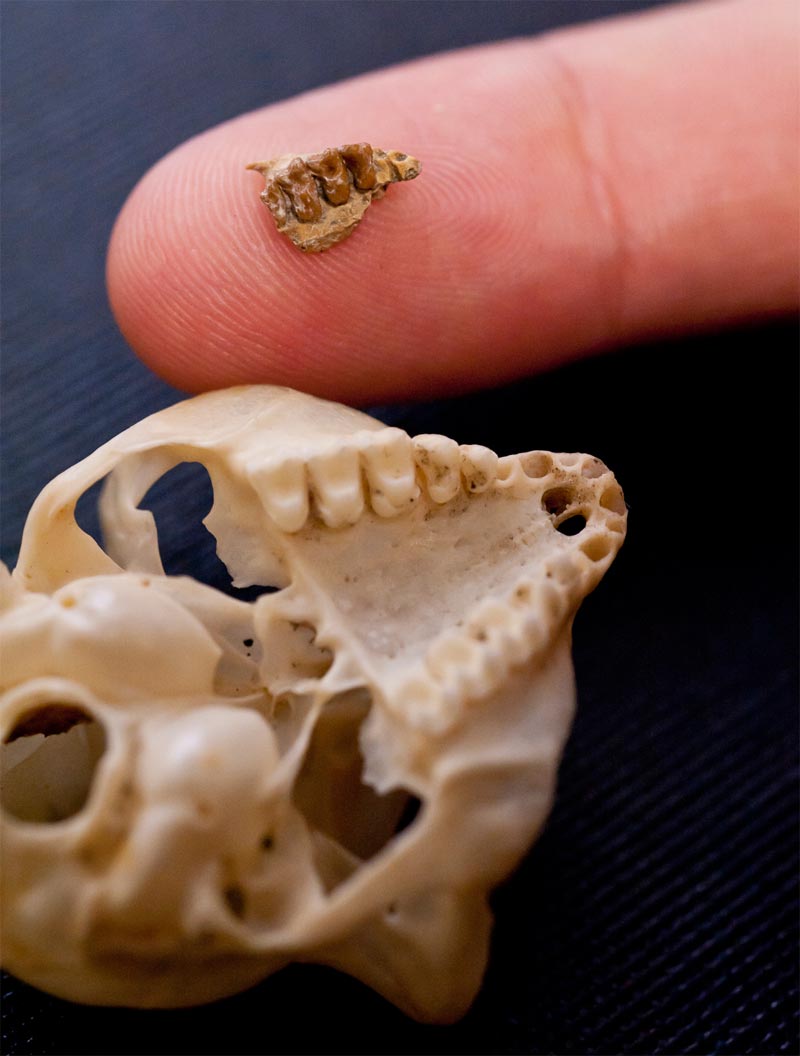Tiny Primate Sported Earliest Fingernails

The oldest fossil evidence of fingernails in modern primates — yes, the kind that now serve as canvases for color — has been discovered on a tiny lemur-like animal, researchers announced today (Aug. 16).
The fingernails would've allowed the miniature primate, called Teilhardina brandti, to grasp branches and move through trees with agility some 55.8 million years ago when it lived in what is now northwestern Wyoming's Bighorn Basin, the researchers said.
"It is our hypothesis that these nails are the precursors of the nails that we see in primates alive today (including humans)," study researcher Jonathan Bloch, an associate curator of vertebrate paleontology at the Florida Museum of Natural History, told LiveScience in an email. [Photos of primate fossils]
Tiny primate, tiny nails
The team examined more than 25 new specimens of T. brandti, including pieces of upper teeth and anklebones that show the mammal lived in trees. The extinct primate was originally described from a single lower molar.
With a body just 6 inches (15 centimeters) long, T. brandti was a pipsqueak, with even smaller nails.
"They are the smallest true nails known on record, whether living or fossil," said lead researcher Ken Rose, a professor in the Center for Functional Anatomy & Evolution at Johns Hopkins University School of Medicine. "That certainly doesn't suggest nails developed with larger bodies."
Get the world’s most fascinating discoveries delivered straight to your inbox.
Some scientists have purported fingernails evolved with an increase in primate body size, though this study confirms they evolved with small body size, the researchers say. [Why Do We Have Fingernails?]
"If you take all the primates that are alive today, they're all going to have characteristics that look the same, but unlike people, many of them live in trees," Bloch said. "By finding parts of the skeleton of this primitive primate, we are able to test whether nails were present in the common ancestor of the group that includes lemurs, monkeys and humans — it's direct evidence as opposed to speculation."
And while claws would've benefited certain types of climbing, "having nails would have helped with grasping small branches and manipulating small food items," Bloch said. "So, the best way to think about it is that nails are associated with a more specialized climbing in trees involving grasping."
Modern primates
T. brandti also represents the earliest North American species from the group of euprimates, or true primates.
"The appearance of the first modern primates in North America co-occurred with the appearance of other modern mammals such as horses, and it's all associated with a major global warming event," said study researcher Stephen Chester, a Yale University doctoral student and research associate at the University of Florida.
Chester is referring to a 200,000-year global warming event known as the Paleocene-Eocene Thermal Maximum, when temperatures were about 15 degrees Fahrenheit (8.3 degrees Celsius) higher than they are today.
The research, which is detailed online and will be published in a forthcoming print issue of the American Journal of Physical Anthropology, was supported by the National Science Foundation and Yale University.
Follow LiveScience for the latest in science news and discoveries on Twitter @livescience and on Facebook.
Jeanna Bryner is managing editor of Scientific American. Previously she was editor in chief of Live Science and, prior to that, an editor at Scholastic's Science World magazine. Bryner has an English degree from Salisbury University, a master's degree in biogeochemistry and environmental sciences from the University of Maryland and a graduate science journalism degree from New York University. She has worked as a biologist in Florida, where she monitored wetlands and did field surveys for endangered species, including the gorgeous Florida Scrub Jay. She also received an ocean sciences journalism fellowship from the Woods Hole Oceanographic Institution. She is a firm believer that science is for everyone and that just about everything can be viewed through the lens of science.
 Live Science Plus
Live Science Plus






